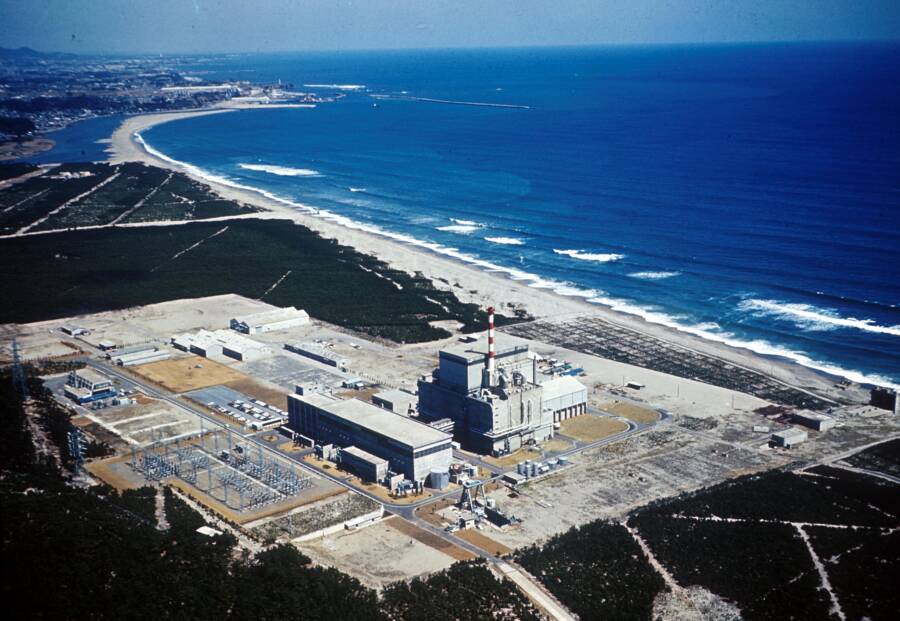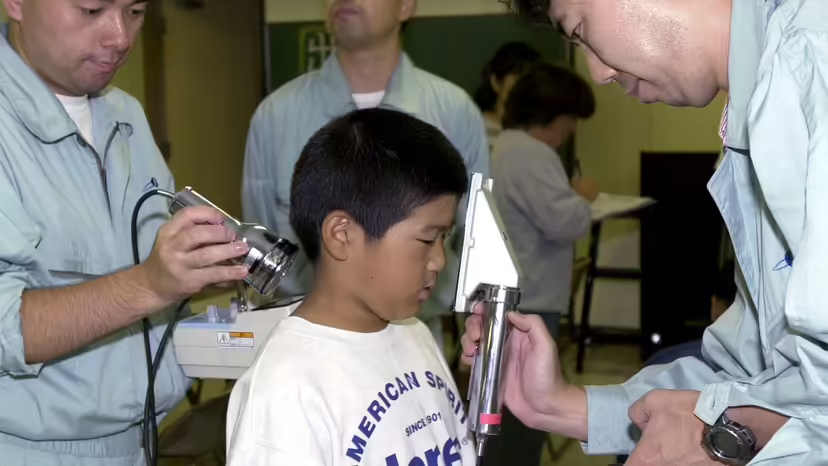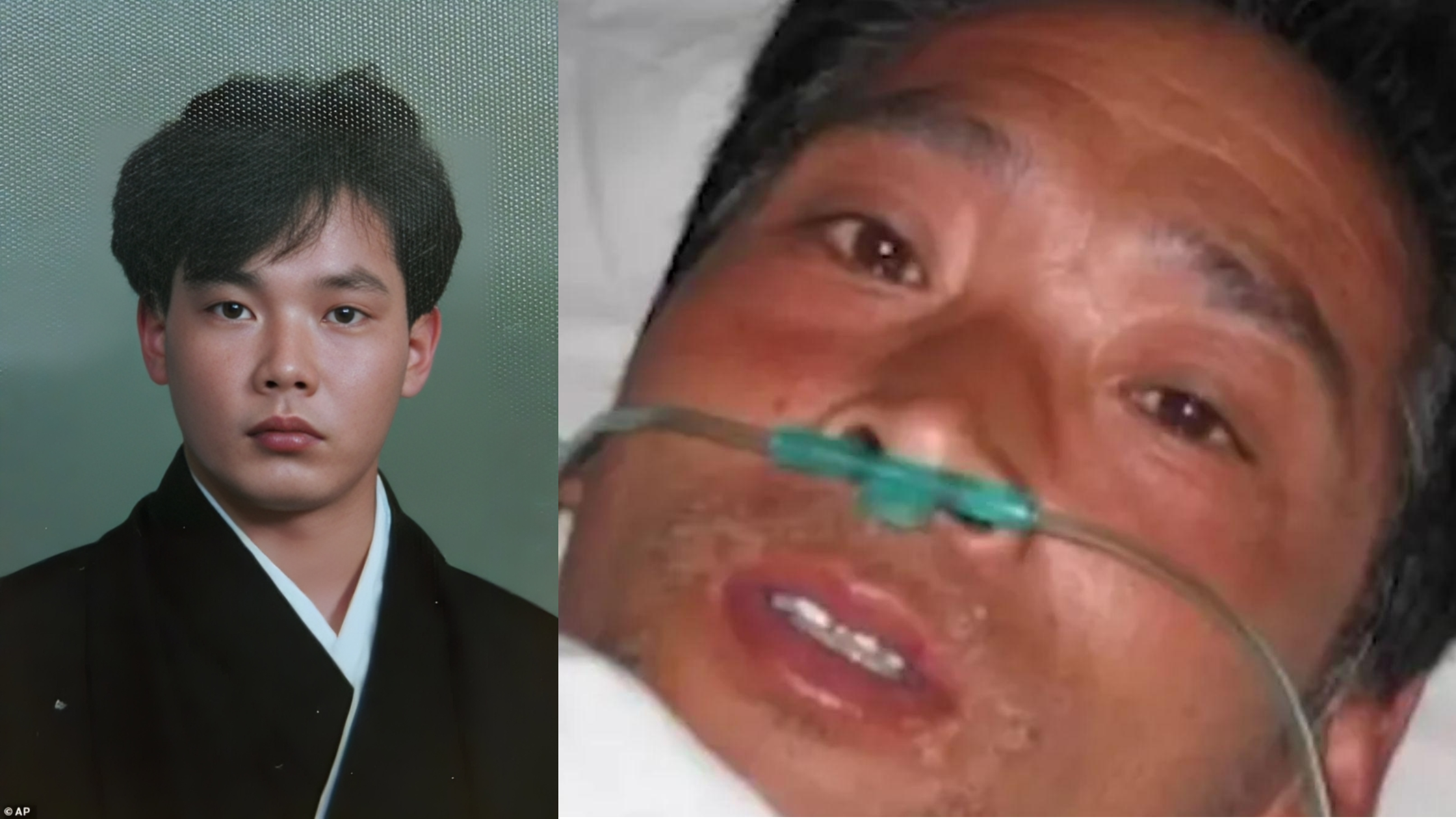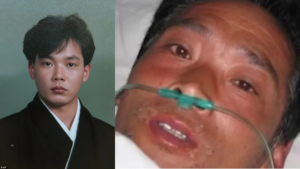The Tragic Story of Hisashi Ouchi Photos: A Cautionary Tale of Radiation Exposure
In 1999, three people working at Japan’s Tokai-Mura nuclear power plant were severely exposed to radiation. Hisashi Ouchi was one of them. The horrible things that happened to him and his later physical decline are captured in what is now known as “Hisashi Ouchi Photos.” These pictures make it very clear how dangerous the nuclear business is and how harmful the effects of radiation exposure are. The accident, Ouchi’s agonizing medical aftermath, ethical questions regarding his prolonged medical treatment, and more general lessons on nuclear safety and emergency response procedures are discussed in this paper.
This article will examine the history of these upsetting pictures and how they still affect nuclear safety rules and worker safety.
Background Of Hisashi Ouchi Photos: The Nuclear Accident at Tokaimura

Before the Fukushima accident in 2011, the JCO nuclear fuel processing plant in Tokaimura, Japan, had the worst atomic accident recorded on September 30, 1999. Along with two colleagues, Hisashi Ouchi helped to process enhanced uranium when a significant mistake happened. The team manually introduced a seventh bucket of aqueous uranium solution to a precipitation tank, straying from accepted safety protocols, therefore setting off a nuclear fission sequence. The enormous gamma radiation emitted immediately revealed the criticality catastrophe.
The Revealing and Divisive Image of Hisashi Ouchi’s Radiation Victimisation
Unquestionably alarming and sparking intense debate are the images showing the radiation injuries suffered by Japanese technician Hisashi Ouchi of the Tokaimura nuclear plant. Ouchi suffered significant physical damage after an accident at the plant in 1999 from a critical dosage of radiation. These pictures serve as a sobering reminder of the possible destruction of the human body by radiation exposure since they clearly show its terrible effects.
The graphic quality of these images has sparked strong arguments and disputes among the scientific and medical sectors. These discussions center the educational worth of such photographs against the moral problems of publishing susceptible and upsetting material. Notwithstanding the ethical questions, public awareness of Hisashi Ouchi’s disabilities has undoubtedly improved our knowledge of radiation illness and its severe, long-term consequences on human health.
Key issues stressing the importance of Hisashi Ouchi’s radiation ailments and the consequences of the contentious images are compiled below:
- Ouchi’s injuries have an extraordinary degree of implications for the following radiation safety policies.
- Ethical arguments about the distribution and availability of graphic medical images.
- These images are essential in raising public knowledge of the dangers related to radiation exposure and supporting improved safety measures.
A PHP table is available below for anyone looking for a graphic depiction of Hisashi Ouchi’s ailments. This table shows the main physical consequences of radiation poisoning concisely, therefore highlighting the crucial importance of such medical crises.
Hisashi Ouchi Suffers Excruciatingly as He Becames the Most Radioactive Human in History
Along with his colleagues, Hisashi Ouchi’s Photos were quickly sent to the National Institute of Radiological Sciences in Chiba following the factory’s disastrous event, triggering an immediate evacuation. Their closeness to the nuclear fuel had caused different degrees of radiation exposure for each.
Usually fatal is exposure to more than seven sieverts of radiation. The only survivor from the group, Yutaka Yokokawa, the supervisor, suffered three sieverts. While Hisashi Ouchi, closest to the source over a steel bucket, absorbed an amazing 17 sieverts, Masato Shinohara got a dosage of 10 sieverts.
Ouchi became the most irradiated person in history from this contact. He arrived already in terrible pain, struggling to breathe, vomiting violently, and passing out unconscious. His eyes showed bleeding, and his body was covered in severe radiation burns.
His disappeared white blood cells and absent immunological response caught everyone’s attention as disturbing. Placed in a specially isolated room to prevent infections, doctors evaluated the considerable internal damage. Three days later, he was sent to the Hospital, where innovative stem cell research was being discussed.
Ouchi had several skin grafts and blood transfusions in his first week in intensive care. Expert in cell transplanting, Hisamura Hirai presented a fresh approach using stem cell transplants instead of the slower bone marrow transplants. Ouchi’s sister gave her stem cells, and at first, the treatment appeared to be promising.
Still, this enthusiasm was fleeting. Later pictures of Ouchi’s chromosomes showed severe damage, with the intense radiation killing the recently implanted cells. His DNA did not regenerate even with skin grafts, despite best attempts. Overwhelmed by the suffering, Ouchi complained, “I can’t take it anymore. I am not a guinea pig. Nevertheless, his family insisted on the ongoing experimental therapies, which made his illness worse and caused his skin to dissolve practically.
Ouchi had a heart attack on his 59th day in hospital treatment. He was resurrected at the urging of his family, going through three heart attacks in an hour. His condition was irreparable, with his DNA seriously degraded and cumulative brain damage from the repeated cardiac arrests. Finally, on December 21, 1999, a last heart attack brought on by multi-organ failure mercifully stopped his terrible suffering.
The Tokaimura Disaster’s aftermath
Following the Tokaimura nuclear accident, an emergency directive was issued restricting 310,000 local people inside a six-mile radius of the Tokai plant for 24 hours. About 10,000 people were tested for radiation exposure over the next ten days; over 600 showed low levels.

KAKU KURITA/GAMMA-RAPHO/GETTY IMAGES
Hisashi Ouchi and Masato Shinohara sadly suffered greatly. For seven months, Shinohara struggled for his life under Ouchi’s therapy regimen, involving blood stem cell transfusions from a newborn’s umbilical cord. On April 27, 2000, he gave his life to lung and liver failure despite all these vigorous attempts.
After three months, Yutaka Yokokawa—who had slight radiation sickness—recovered; later on, she was sued for carelessness. With many compensation claims settled by JCO, the firm in charge paid $121 million.
Operating under new management for more than ten years, the Tokai nuclear power station stopped operations only following an automatically triggered shutdown during the 2011 Tōhoku earthquake and tsunami; it has remained idle since.
Conclusion
The pictures of Hisashi Ouchi serve as a moving record of the terrible results of one of the greatest nuclear accidents. Apart from being a medical case study on the consequences of acute radiation sickness, they provide a sobering reminder of the ethical obligations in nuclear energy management and healthcare. These pictures highlight the need for ethical considerations and safety procedures in high-risk sectors, inspiring continuous debates and developments to stop further catastrophes.
FAQs
-
Who Is Hisashi Ouchi Photos?
During a nuclear accident in 1999, Heishi Ouchi, a technician at the Tokaimura nuclear plant in Japan, was extensively exposed to a great volume of radiation. Still among the worst radiation incidents in history is the one that happened here.
-
What Does The Hisashi Ouchi Photos Show?
Pictures of Hisashi Ouchi show his worsening state over the 83 days he was kept alive in a hospital following deadly radiation exposure. Graphic and illustrating the extreme physical consequences of radiation exposure on the human body, these pictures illustrate.
-
Why were Hisashi Ouchi’s Photos published?
Originally published to the public domain as part of medical and scientific debates over the consequences of radiation exposure and the ethical issues surrounding medical care in severe circumstances, the images were first When safety rules fail, they act as a sobering reminder of the risks connected with nuclear energy.
-
What was the popular reaction to Hisashi Ouchi’s Photos?
Shock and terror were the public response to Hisashi Ouchi’s pictures. Many individuals felt great empathy for Ouchi’s suffering and questioned the morality of prolonging his life under such conditions for medical observation and research.
-
From Hisashi Ouchi’s Photos, what lessons might one draw?
The sad instructional value of Hisashi Ouchi’s images helps one to grasp the terrible results of radiation poisoning. They also draw attention to the need for strict safety standards in nuclear plants and start conversations on medical ethics, especially with relation to patient permission and the limits of life-prolonging medical operations in terminal diseases.

















